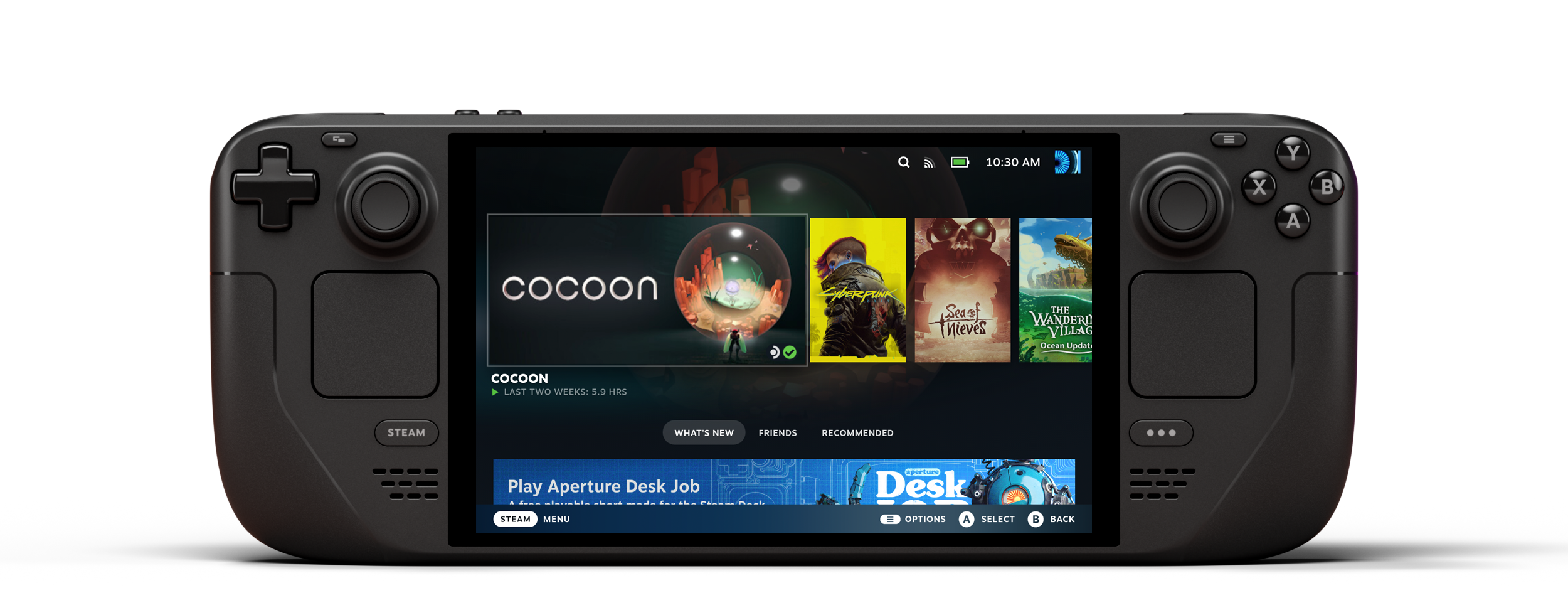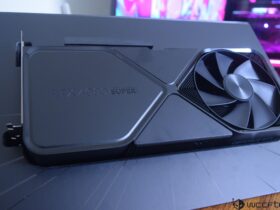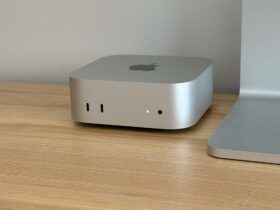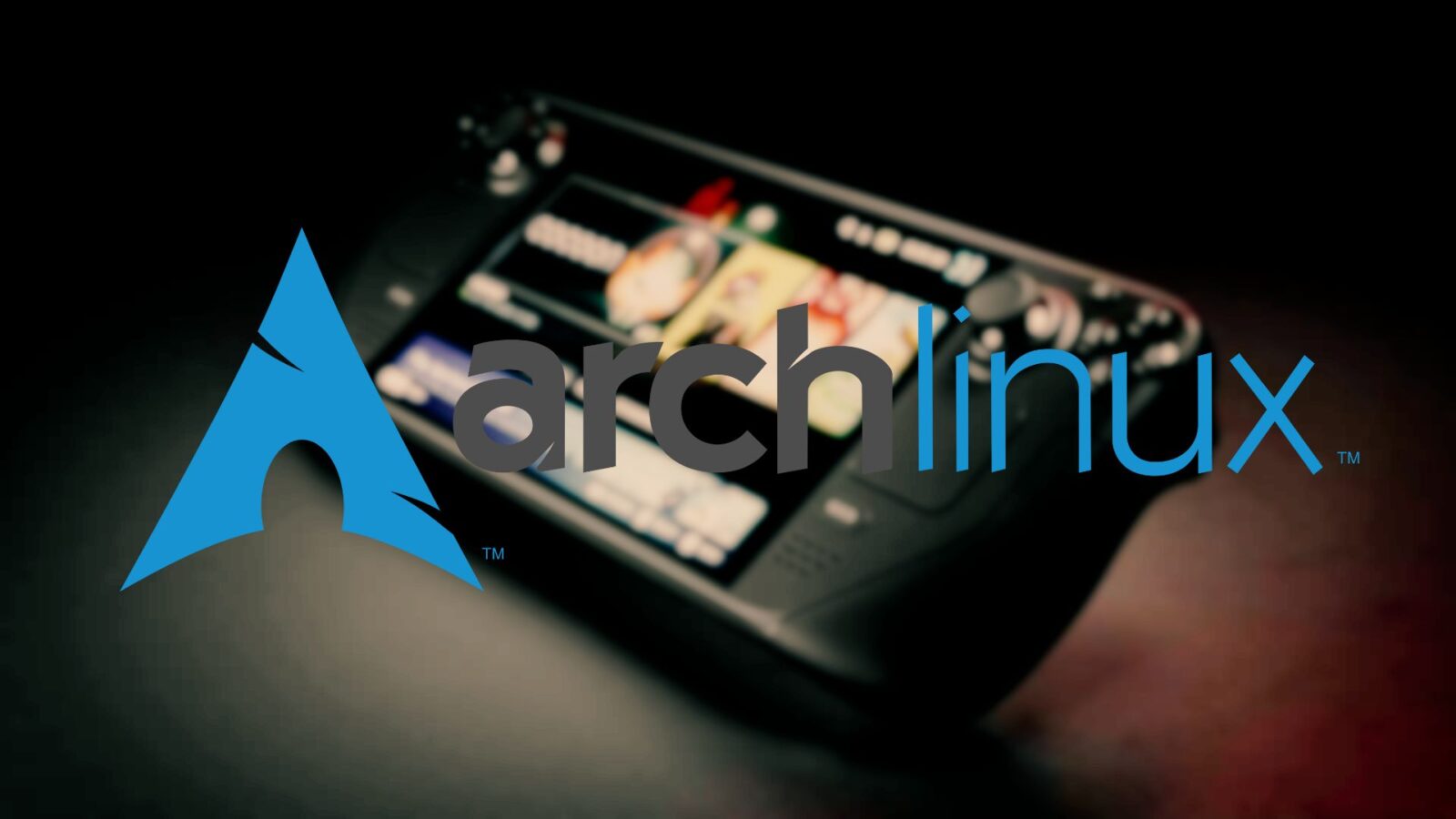Daftar Isi
The gaming world is witnessing the rise of an innovative platform that stands to redefine the experience of Linux gamers everywhere—the Steam Deck. Crafted by Valve, the masterminds behind the Steam gaming platform, the Steam Deck is not merely a new entry into the handheld gaming market. It represents a bold fusion of portability and the comprehensive capabilities of a PC, all powered by this open-source system. This device signifies a pivotal moment in the gaming industry, promising to deliver unparalleled freedom and versatility to gamers who prefer the open-source system environment.
Introducing the Steam Deck: A Hybrid Gaming Powerhouse
The Steam Deck transcends traditional gaming paradigms by offering a unique blend of mobility and desktop-grade performance. At its core, it’s a portable gaming console, yet it embodies the essence of a Linux-powered PC, providing users with a robust platform that’s capable of running a wide array of games—from indie titles to AAA blockbusters. Valve’s ambition with the Steam Deck is to bridge the gap between the convenience of handheld gaming and the extensive software library available on PC, particularly catering to the open-source gaming community.
By leveraging the flexibility of open-source system, the Steam Deck opens up new possibilities for gamers, allowing for a gaming experience that’s not confined by the limitations of proprietary operating systems. It stands as a testament to the versatility and potential of Linux as a gaming platform, challenging the status quo and inviting gamers to explore a world where their favorite games are accessible on a device that fits in their hands. As the Steam Deck begins to make its mark, it’s poised to become an indispensable tool for gamers who value both the freedom of choice and the capability to game anywhere, anytime.
Steam Deck: Revolutionizing Linux Gaming with Portability and Versatility

The Steam Deck emerges as a groundbreaking device in the realm of gaming, marrying the flexibility of Linux with Valve’s gaming ecosystem through a customized version of Arch Linux. Valve has designed SteamOS, a user-friendly interface layered on top of Arch Linux, to offer gamers a seamless bridge between the expansive functionalities of Steam’s “Big Picture Mode” and the intuitive, controller-friendly navigation akin to the Nintendo Switch. This integration ensures that essential Steam features such as friends lists, notifications, achievements, and forums are fully optimized for the Steam Deck’s unique control scheme.
Read More: Nintendo Shuts Down Yuzu Emulator: A Legal Showdown
A Closer Look at KDE Plasma and Beyond
For users keen on venturing beyond the realm of gaming, the Steam Deck offers the versatility to switch to the KDE Plasma desktop environment. This feature presents a familiar, Windows-like user experience, complete with a Start-like menu and access to essential applications, enhancing the device’s utility as a comprehensive computing platform. Moreover, the Steam Deck embraces customization through the use of flatpaks, self-contained installation packages that allow users to personalize their interface and software applications with ease.
The Dawn of a New Era in Gaming
The introduction of the Steam Deck signifies a pivotal shift in Linux gaming, positioning the device as a portable powerhouse that transcends traditional gaming boundaries. Equipped with a robust AMD APU, the Steam Deck is not confined to gaming alone; it doubles as a versatile PC that can be docked for a desktop-like experience. At the heart of its gaming capabilities lies Proton, Valve’s innovative compatibility layer that facilitates the playing of Windows games on Linux. While Proton continues to evolve, improving its compatibility with an expanding roster of titles, it represents a significant step forward in making Linux a viable platform for mainstream gaming.
Furthermore, the Steam Deck champions the spirit of customization and flexibility inherent to Linux. Users are not bound to SteamOS; they have the freedom to install their preferred Linux distribution, catering to a wide range of preferences, whether one is an Arch aficionado or a devotee of another distro. This openness empowers users to tailor their Steam Deck experience to their specific needs and preferences, reinforcing the device’s position as a transformative tool in the landscape of gaming and personal computing.
Conclusion
In essence, the Steam Deck is not just a gaming console; it’s a beacon for the future of Linux gaming, offering unprecedented portability, versatility, and user customization. Its introduction marks a significant milestone in the ongoing evolution of gaming, promising to expand the horizons of what gamers can expect from a handheld device. As the Steam Deck continues to evolve and Proton’s capabilities expand, the potential for Linux as a gaming platform seems boundless, heralding a new era of gaming innovation and flexibility.





























